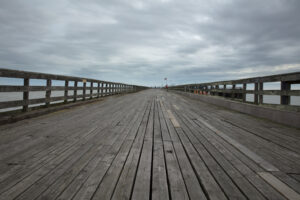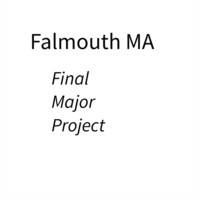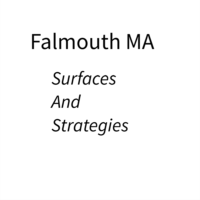Location
Walton Pier
Intent
Walton Pier was the last of the 4 pleasure piers that on the Essex coast. My intention for this shoot was to capture images similar to those taken at the other 3 piers since the start of this module. Though I decided to add a new element of experimentation which was create an impression of the deck using and early form of reproduction namely to create a rubbing of a section of decking that I found visually appealing.
Equipment Used
Similar to the other pier shoots I decided to use two DSLR cameras the 5Ds and 5D Mk3 with the 24-70mm f2.8 and 70-200mm f2.8 lens. To create the rubbing I decided to use some lightweight black art paper and metallic coloured crayons.
Methodology
The methodology for Walton Pier was broadly similar to the approach used at Clacton and Harwich piers. I spent time under the pier exploring the superstructure of the pier looking for interesting details and the interface of the pier to the land and sea. The next stage of exploration was to traverse the pier to find an interesting point that would invite the reader to want to walk on along the pier. Then I walked along the pier looking at the decking searching for areas of interest mainly point where planks joined together as these represented the frayed edges. At some of those points I decided to capture a deck rubbing recording not just the texture of the wood but the impact of the elements and the passage of humans on their walks.
Images


Walton Pier has had a more checkered history than other piers along the Essex coast and images I recorded reflect the reality of that story. The superstructure has appears to have been spray coated in some form of concrete to protect it from the elements. Though that treatment has created some more organic structures that the wood of Harwich or the iron of Southend Piers. There earthy tones to those pier legs. The promenade deck appears to have similarly experienced a tough time with more varied patching on of the deck than other piers. However that has resulted in more interesting textures. I decided to pair the rubbings with their equivalent photographic reproduction as a diptych.
Research References
Similar to the other piers I did some basic result about the history of the pier (Piers.org.uk, 2017) plus details from the piers own website (Waltonpier.co.uk, 2017) that only provided very basic information about the pier but no history.
Assessment of outcome
Overall I managed produce a set of images that remained consistent with the images recorded of other the other piers. I really like to tonal range that exists within the images and even the concrete has taken on a more natural colour palette due to is extended exposure to the environment. It was interesting that I could not find any examples of trace artefacts that record the passing of people who might have spent time on the pier. The initial deck rubbings are interesting in the way they pick up certain details but not others. I am happy with the current representation using diptychs though I will experiment to identify alternative ways to combine them into the image making process. The level of detail recorded in some of them reminds me of the surface of the sea and this could lead to an interesting collage or montage effect once I have built up a reasonable collection of rubbings form different objects along the coastline.
References
- Piers.org.uk. (2017). Walton-on-the Naze – National Piers Society. [online] Available at: https://www.piers.org.uk/pier/walton-on-the-naze/ [Accessed 5 Nov. 2017].
- Waltonpier.co.uk. (2017). Walton Pier – Opening Times. [online] Available at: http://www.waltonpier.co.uk/openingtimes.asp [Accessed 5 Nov. 2017].




Pingback: Clacton Pier – Project
Pingback: Oral Presentation – Reflection